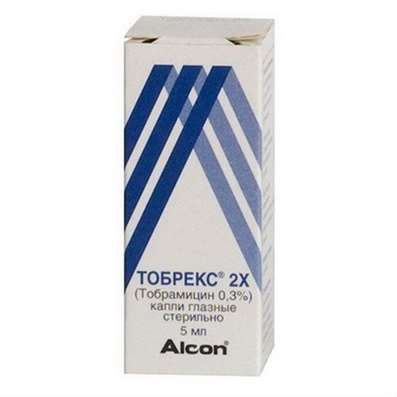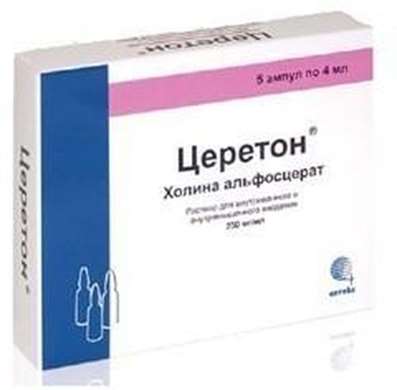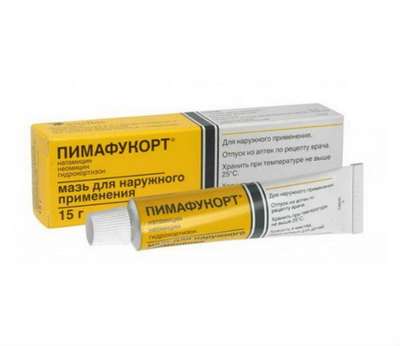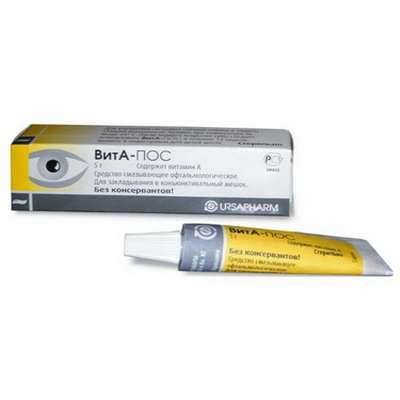Instruction for use: Hydroxiethyl starch
I want this, give me price
Trade name of the drug – Refortan HES 6%, Voluven, Stabisol HES 6%, Venofundin, Infukoll HES, HAES-steril, HyperHAES, RheHES 200, Hemohes 10%, Refortan HES 10%, RheHES 130, GETA-SORB, Hemohes 6%, Hydroxyethyl starch 130 / 0.42, Hydroxyaethylkrachmal-Åskom, Hemohes, Hydroxyethyl starch 200, Volecam, , Plasmastabil 200, Hydroxyethyl starch 200 / 0.5, Vîleodicramen, Plazmaline, PolyChE, Hydroxyethyl starch 130/0.4
The Latin name of the substance Hydroxiethyl starch
Amylum hydroxyaethylicum (genus. Amyli hydroxyaethylici)
Chemical name
A colloid consisting of amylopectin, with a molecular weight of 150,000-450000 (an average of about 264,000).
Pharmacological groups:
Substitutes for plasma and other blood components
Regulators of water-electrolyte balance and acid-base balance
The nosological classification (ICD-10)
A41.9 Septicemia, unspecified: Septic diseases; Septicemia / bacteremia; Toxico-infectious shock; Endotoxin shock; Bacterial septicemia; Bacterial infections of severe course; Generalized infections; Generalized systemic infections; Infections generalized; Wound sepsis; Septiccopymia; Septic-toxic complications; Septicemia; Septic conditions; Septic shock; Septic condition; Septic shock
E86 Decreased fluid volume [hypovolaemia]: Water deficit recovery; Indemnification of isotonic deficiency of water; Compensation for isotonic sodium deficiency; Compensation BCC; Replenishment of water deficit with stored KShS; Replenishment of fluid volume; Replenishment of BCC; Replenishment of electrolytes with stored KHS; Hypovolemic conditions; Hypovolemic condition; Hypovolemia; Hypotonic form of hypohydration; Hypochloremia with dehydration; Dehydration of different origin; Dehydration in children; Substitution of plasma volume for blood loss in pediatrics; Substitution of plasma with its losses and burns; Isotonic dehydration; Isotonic form of hypohydration; Violation of the water-salt balance; Dehydration;Dehydration in acute intestinal infections; Acute hypovolemia; Loss of fluid in burns; Toxicosis with exsycosis
R58 Bleeding, not elsewhere classified: Abdominal apoplexy; Hemorrhagia; Haemorrhage of the esophagus; Hemorrhage; Generalized bleeding; Diffuse bleeding; Diffuse bleeding; Prolonged bleeding; Blood loss; Blood loss during surgical interventions; Bleeding during surgery and in the postoperative period; Bleeding during labor; Bleeding and haemorrhage in hemophilia B; Bleeding from the gums; Bleeding intraoperative abdominal; Bleeding against a background of coumarin anticoagulants; Hepatic hepatitis; Bleeding in hemophilia A; Bleeding at hemophilia A; Bleeding with inhibitory forms of hemophilia A and B; Bleeding due to leukemia; Bleeding in patients with leukemia; Bleeding; Bleeding due to portal hypertension; Bleeding due to hyperfibrinolysis; Drug bleeding; Local bleeding; Local bleeding due to activation of fibrinolysis; Massive blood loss; Acute blood loss; Parenchymal hemorrhage; Hepatic bleeding; Postoperative hemorrhage; Kidney bleeding; Vascular-platelet hemostasis; Traumatic bleeding; Threatening bleeding; Chronic blood loss
T30 Thermal and chemical burns of unspecified site: Pain syndrome with burns; Pain in burns; Pain with burns; Sluggishly healing post-burn wounds; Deep burns with a wet scab; Deep burns with abundant compartments; Deep burn; Laser burn; Burn; Burn of rectum and perineum; Burn with mild exudation; Burn disease; Burn injury; Superficial burn; Superficial burn of I and II degree; Superficial skin burns; After-burn trophic ulcer and wound; Post-burn complication; Loss of fluid in burns; Sepsis burn; Thermal burns; Thermal skin lesions; Thermal burn; Trophic after-burn ulcers; Chemical burn; Surgical burn
T81.0 Bleeding and hematoma complicating the procedure, not elsewhere classified: Bleeding in the postoperative period; Bleeding during transfusion; Bleeding during operations on the brain; Bleeding during surgical interventions; Bleeding after colorectal interventions; Bleeding after prostatectomy; Bleeding during surgery and in the postoperative period; Bleeding due to surgery on the prostate and urinary tract
Z100 * CLASS XXII Surgical practice: Abdominal surgery; adenomectomy; Amputation; Coronary angioplasty; Angioplasty of the carotid arteries; Antiseptic skin treatment for wounds; Antiseptic Hand; Appendectomy; atherectomy; Balloon coronary angioplasty; Vaginal hysterectomy; The coronary bypass; Interventions in the vagina and cervix; Interventions on the bladder; Intervention in the mouth; Restoration and reconstructive surgery; Hand hygiene of medical personnel; Gynecologic surgery; Gynecological intervention; Gynecological surgery; Hypovolemic shock during operations; Disinfection of purulent wounds; Disinfection of wounds edges; Diagnostic intervention; Diagnostic procedures; Cervical Diathermocoagulation; Long-surgery; Replacing the fistula catheters; Infection in orthopedic surgery; Artificial heart valve; cystectomy; Short-term outpatient surgery; Short-term operation; Short surgical procedures; Krikotireotomiya; Blood loss during surgery; Bleeding during surgery and in the postoperative period; Kuldotsentez; laser photocoagulation; laser coagulation; retinal laser coagulation; Laparoscopy; Laparoscopy in Gynecology; CSF fistula; Small gynecological operations; Small surgical procedures; Mastectomy and subsequent plastic; mediastinotomy; Microsurgical operations on the ear; Mukogingivalnye operation; suturing; Minor surgery; neurosurgical operation; Immobilization of the eyeball in ophthalmic surgery; testectomy; pancreatectomy; Perikardektomiya; The period of rehabilitation after surgery; The period of convalescence after surgery; Percutaneous transluminal coronary angioplasty; Pleural thoracentesis; Pneumonia postoperative and posttraumatic; Preparation for surgical procedures; Preparation for surgery; Preparation of the surgeon's hands before surgery; Preparation of the colon for surgical procedures; Postoperative aspiration pneumonia in neurosurgical and thoracic surgery; Postoperative nausea; Postoperative bleeding; postoperative granuloma; postoperative shock; The early postoperative period; myocardial revascularization; Radiectomy; gastric Resection; bowel resection; uterine Resection; liver Resection; enterectomy; Resection of part of the stomach; Reocclusion of the operated vessel; Bonding tissues during surgical procedures; Removal of sutures; Condition after eye surgery; Condition after surgery; Condition after surgery in the nasal cavity; Condition after gastrectomy; Status after resection of the small intestine; Condition after tonsillectomy; Condition after removal of the duodenum; Condition after phlebectomy; Vascular surgery; Splenectomy; Sterilization of surgical instruments; Sterilization of surgical instruments; sternotomy; Dental surgery; Dental intervention in periodontal tissues; strumectomy; Tonsillectomy; Thoracic surgery; Thoracic surgery; total gastrectomy; Transdermal intravascular coronary angioplasty; Transurethral resection; Turbinektomiya; Removal of a tooth; cataract surgery; Removal of cysts; tonsillectomy; Removal of fibroids; Removing the mobile primary teeth; Removing polyps; Removing broken tooth; Removal of the uterus body; Removal of sutures; Fistula likvoroprovodyaschih ways; Frontoetmoidogaymorotomiya; Surgical infection; Surgical treatment of chronic limb ulcers; Surgery; The surgery in the anal area; The surgery on the colon; Surgical practice; The surgical procedure; Surgical interventions; Surgery on the gastrointestinal tract; Surgical procedures on the urinary tract; Surgical procedures on the urinary system; Surgical intervention of the genitourinary system; Surgical procedures on the heart; Surgical manipulation; surgery; Surgery on the veins; Surgical intervention; Vascular surgery; Surgical treatment of thrombosis; Surgery; cholecystectomy; Partial gastric resection; hysterectomy; Percutaneous transluminal coronary angioplasty; Percutaneous transluminal angioplasty; Coronary artery bypass; tooth Extirpation; Extirpation of milk teeth; pulpectomy; pulsative cardiopulmonary bypass; tooth Extraction; teeth Extraction; cataract extraction; Electrocoagulation; endourological intervention; episiotomy; Etmoidotomiya; Complications after tooth extraction
Characteristics of substance Hydroxiethyl starch
Produced in the form of 10% sterile, pyrogen-free, pale yellow (to amber) color solution (0.9% sodium chloride) for infusion (pH about 5.0).
Pharmacology
Mode of action - Plasma-substituting.
Continuously circulates in the bloodstream (colloid osmosis), increases bcc, helps normalize and improve hemodynamic parameters, increases (maintains) blood pressure, accelerates ESR and promotes effective collection of leukocyte mass during centrifugation for the purpose of leukapheresis.
Molecules with a molecular weight below 50,000 are rapidly eliminated by renal excretion. After a single IV dose of about 500 ml (about 50 g), 70-80% of the dose is excreted in the urine within 24 hours, a 5-6% dose is expended on the leukapheresis, the remaining 12-15% (about 6.8 g) are exposed Slow elimination within 1 week.
Application of substance Hydroxiethyl starch
Hypovolemia, hypovolemic shock (prevention and therapy): with burns, injuries, surgeries, septic conditions, etc .; Hemodilution (including isovolemic); Increase the collection of leukocyte mass by centrifugation (as an additional tool for leukapheresis).
Contraindications
Hypersensitivity, severe hemorrhagic diathesis and other disorders, accompanied by bleeding, incl. With coagulopathy, hypervolemia, hyperhydration or dehydration, severe congestive heart failure, severe renal dysfunction with oligo- and anuria (not associated with hypovolemia), pregnancy, breast-feeding, children's age (up to 10 years).
Side effects of the substance Hydroxiethyl starch
Allergic and anaphylactoid reactions, including hives, bronchospasm with difficulty breathing, pulmonary edema, heart failure, increased levels of amylase in the blood serum; Against the background of large doses - coagulopathy (transient prolongation of the coagulation time, prothrombin and partial thrombin time), with hemodilution - a decrease (within 24 hours) of the serum values of total protein, albumin, calcium and fibrinogen, with leukapheresis - headache and dizziness, diarrhea , Nausea, vomiting, temporary weight gain, anxiety, insomnia, tiredness, weakness, malaise, fever, chills, tremors, swelling, paresthesia, acne, chest pain, increased heart rate, some decrease in the number of platelets and hemoglobin.
Routes of administration
parenterally.
Precautions for the substance Hydroxiethyl starch
They are used with caution when swelling of the lungs and congestive heart failure (due to fluid overload of the circulatory bloodstream), with renal Cl (as the main pathway of excretion is renal), liver disease in the anamnesis (with multiple infusions, the level of indirect bilirubin in serum Blood normalizes 96 hours after the end of the last infusion). It is necessary to take into account the possible decrease in the serum values of total protein, albumin, calcium, platelets, fibrinogen, hemoglobin, an increase in the level of amylase (complicates the diagnosis of pancreatitis), prolongation of bleeding time. Before and during treatment it is recommended to regularly and regularly monitor the content of leukocytes, platelets, hemoglobin, hematocrit, creatinine, prothrombin and partial thromboplastin time. When the temperature, chills and other complications appear during the procedure of leukapheresis or the instability of the solution is detected, the infusion is immediately stopped. Do not inject the solution when the color changes or the formation of crystalline precipitate.

 Cart
Cart





